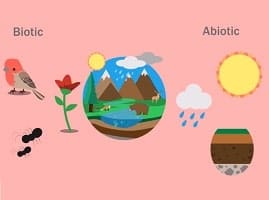Endangered Species: Definition And Facts With Examples
We explain what an endangered species is, the reasons why they are endangered and some examples of these species.
-
What is an endangered species?
When talking about a species in danger of extinction, it is made reference to those whose total number of individuals is very low , so there is a real risk of extinction of the species. The latter is known as extinction, and has occurred naturally throughout the history of life on the planet (due to catastrophes that generate mass extinction or the action of natural selection over the centuries), or artificially due to human activities ( pollution , hunting and indiscriminate logging, etc.). In general, species threatened by humans are considered endangered species.
While it is true that animals and life in general make efforts to adapt to changes in their environmental conditions, it is also true that human beings have changed the planet much more radically and rapidly (especially since the Industrial Revolution ) than any another species or phenomenon of history , thus causing the decline in the most vulnerable populations, either by direct elimination of their individuals, by destruction of their habitat or as a result of the elimination of other members of their trophic chain , reducing the amount of food available to the endangered species.
Internationally , attempts are being made to protect endangered species and lists of protected species are prepared, such as the IUCN Red List, which contained in 2009 some 2448 animal taxa and 2280 plant species considered endangered; as well as about 1665 animal taxa and 1575 vegetables considered critically endangered.
-
Examples of endangered species
Some of the main endangered species in the world are the following:
- Polar bears (Ursus maritimus). The exact number of individuals in wildlife that exist (between approximately 20,000 and 25,000) is unknown, but given the conditions of polar thaw due to global warming , their prospects are not good.
- Bengal tigers (Panthera tigris). The second largest species of tiger on the planet, and one of the most threatened species on the planet, it is estimated that its total number is around 2,500 individuals, and its ecosystem is expected to be lost by 70% by 2060, if the current environmental conditions.
- The blue whale (Balaenoptera musculus). The largest animal on the planet is this marine mammal whose population was very abundant in the early twentieth century, but after 40 years of indiscriminate hunting barely borders the 2000 individuals.
- The Hawksbill turtle (Eretmochelys imbricata). Critically endangered, this turtle is among the most protected species on the planet, since its meat is considered a delicacy in many eastern countries. Its appearance is similar to that of other marine species, and it is found between the coral reefs of the Atlantic and the Indo-Pacific Ocean.
- The Orinoco crocodile (Crocodylus intermedius). Endemic species of the Orinoco river basin in Venezuela and Colombia, it is the largest predator in South America and one of the largest crocodile species in the world, with its seven meters in length. Since 1970, attempts have been made to breed new pups in captivity to reintroduce them into adulthood, but after 1996 it is considered to be in critical danger of extinction.
- The mountain gorilla (Gorilla beringei). At critical risk of extinction, with just 900 living individuals, this species is concentrated in the jungles of Central Africa and Uganda, victim of indiscriminate hunting, war and deforestation of their habitat. Its resemblance to our own species has not protected it from being about to become extinct.
- The giant Chinese salamander (Andrias davidianus). It is a large amphibian (can reach 1.8 meters) endemic to China, where its population is decreasing, given its hunting as food and as a source of medicinal supplies.
- The dragon tree (Dracaena draco). This species of tree typical of the subtropical climate of the Canary Islands, being a plant symbol of the island of Tenerife, but also of western Morocco. They are particularly long-lived species, with stems without a growth ring and fleshy fruits, which reach up to 600 meters of altitude. Its species is in a state of vulnerability, just the state prior to entering the formal list of species in imminent danger of extinction.
Danger of Extinction
At present numerous species of living beings are more or less close to extinction , mostly due to activities resulting from human labor. That is, they are at risk or danger of extinction. These species are classified (according to the IUCN Red List) according to the number of living specimens remaining, in several categories:
- Extinct (Ex). When there are no longer live specimens of the species.
- Extinct in the Wild (EW). When the remaining specimens live only in captivity and the species can no longer be observed in its natural habitat .
- Critically Endangered (CR). When it is estimated that its population of mature individuals is equal to or less than 250, or when its total population has decreased by 80% to 90% in the last 10 years or 3 generations.
- Endangered Extinction (EN). When its population of mature individuals is estimated between 250 and 2500 copies, or when its total population has decreased between 70% and 80% in the last 10 years or 3 generations.
- Vulnerable species (VU). When they are not directly in danger of immediate extinction, but they are threatened by such possibility. This is considered when its number of copies is high, but tending down.
- Almost threatened species (NT). When it does not meet the requirements to be a vulnerable species, but it is not considered out of all risk. In this step they are considered “low risk” species.
- Minor Concern (LC). For species that are not at risk of apparent extinction, since their numbers are stable or even growing.




